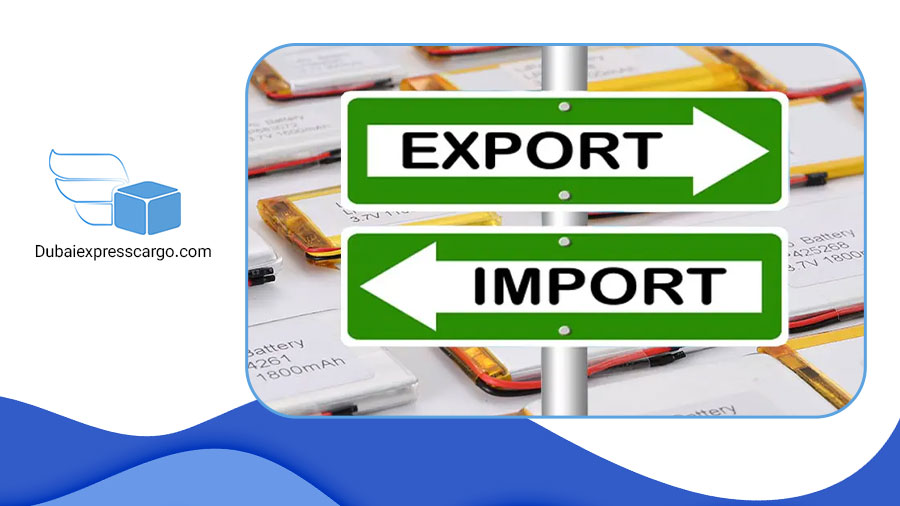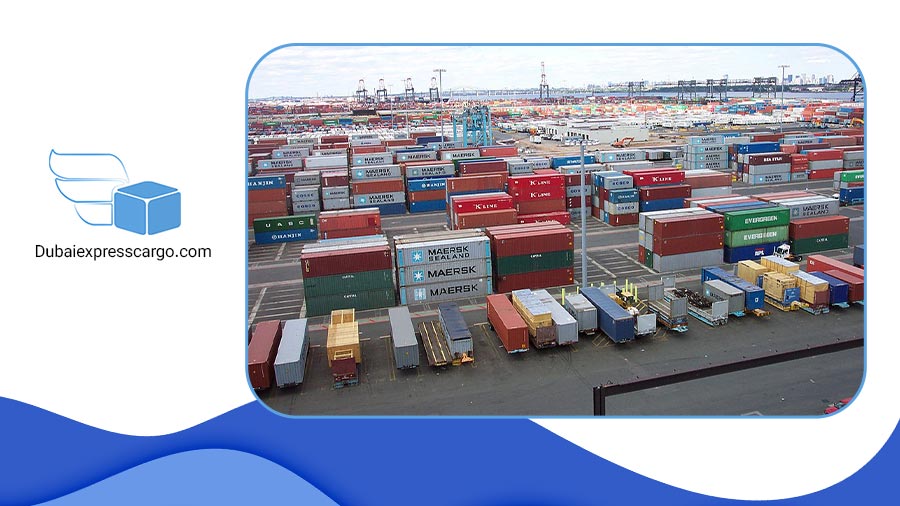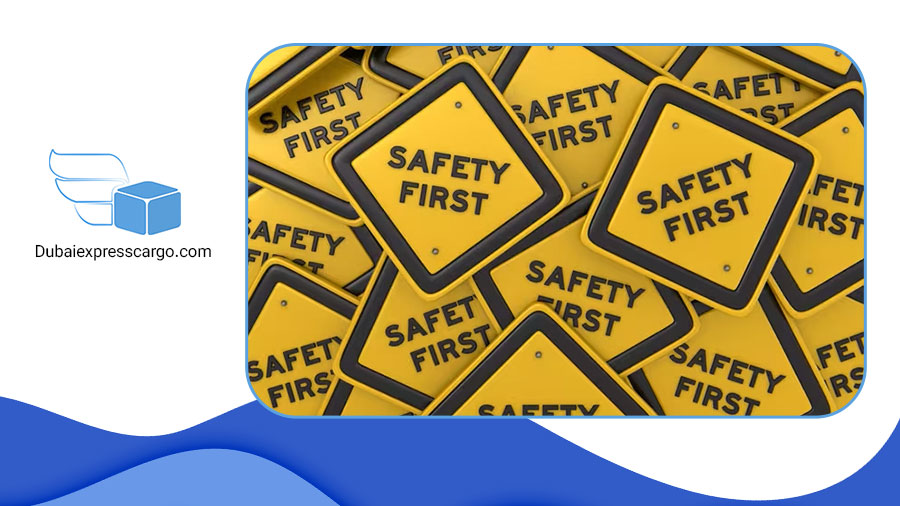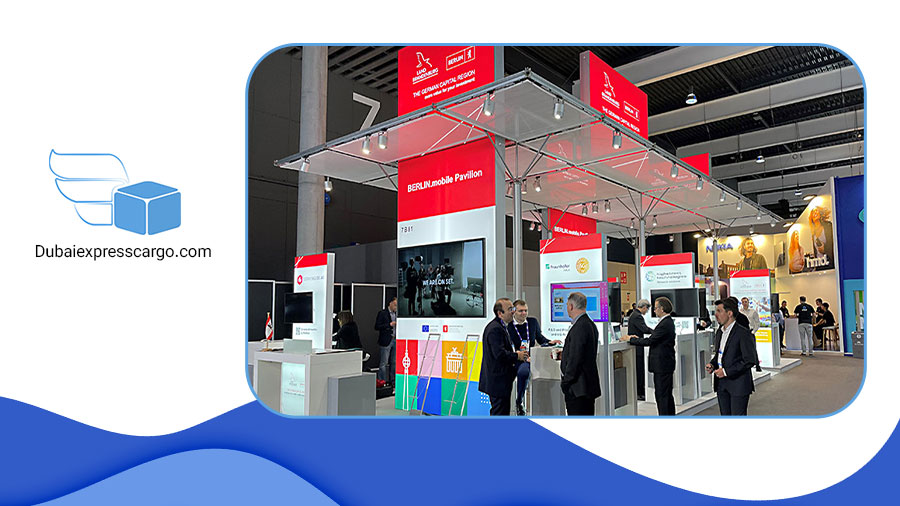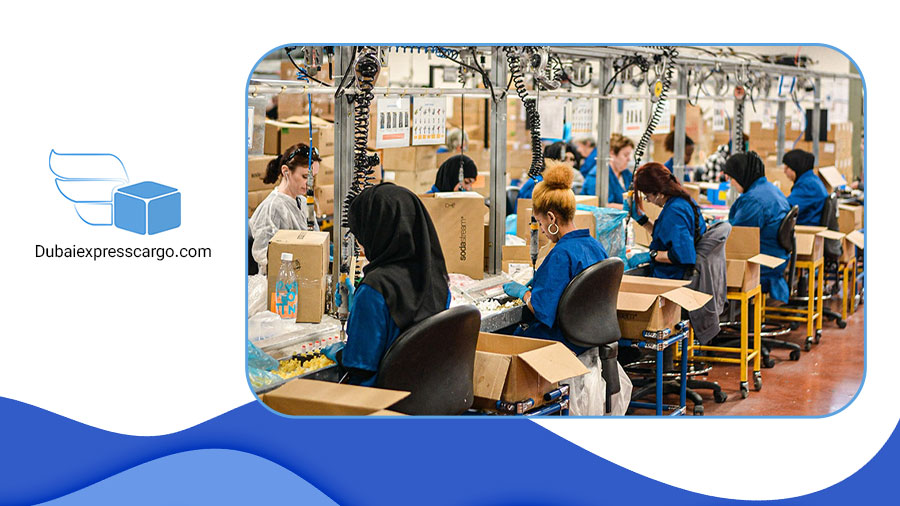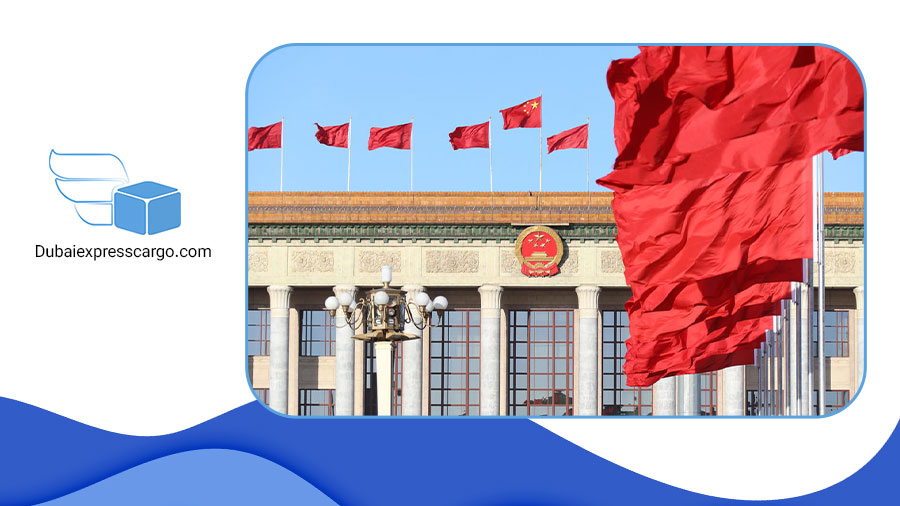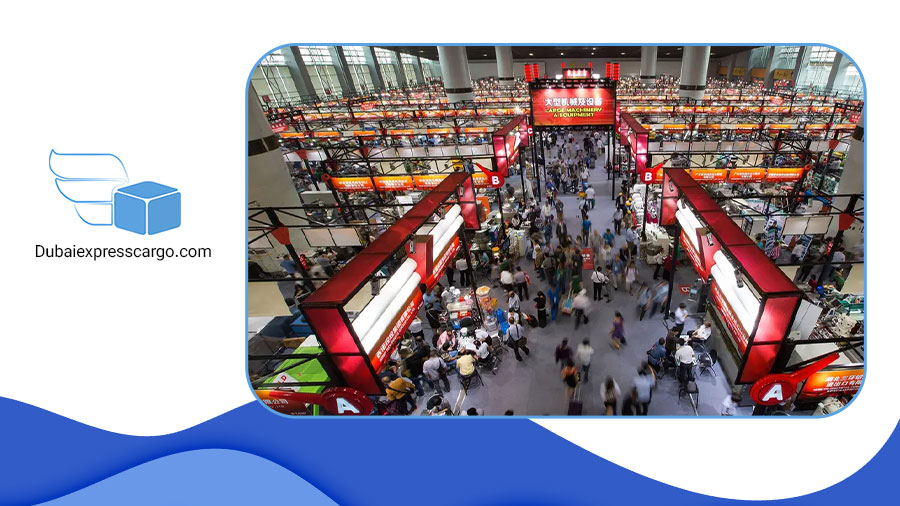Importing laptops from China can be a rewarding and lucrative business venture, as it offers cost savings, versatility, and customization options.
Chinese manufacturers have established themselves as leaders in the laptop manufacturing industry due to their expertise in assembling complex electronic components, coupled with the country’s vast supply chain and skilled labor force.
Importing laptops directly from China eliminates intermediaries, resulting in significant cost savings. Additionally, Chinese manufacturers offer exceptional versatility and customization options, allowing buyers to tailor their laptops to specific needs.
In this blog post from Dubai Express Cargo, we will cover all the steps of this importing process.
Step 1: Identifying Reliable Laptop Suppliers in China

Navigating the vast and diverse Chinese electronics market can be daunting, especially for those new to importing from China. However, with careful research and a strategic approach, you can find reliable laptop suppliers to meet your needs and expectations.
Exploring Online Platforms:
Many online platforms cater to B2B (business-to-business) transactions, providing a convenient and efficient way to connect with potential suppliers.
Some of the most prominent platforms include:
- Alibaba: The world’s largest B2B marketplace, boasting a massive pool of suppliers from China and beyond.
- DHgate: is another popular B2B platform focusing on low-cost products and bulk orders.
- Global Sources: A well-established B2B platform providing comprehensive data and market insights on Chinese suppliers.
Researching and Screening Suppliers:
Beyond the initial platform search, thorough research is crucial to identify reliable suppliers.
Here are some key factors to consider:
- Product Expertise: Ensure the supplier specializes in laptop manufacturing and has a proven track record of quality products.
- Production Capacity: Evaluate their ability to meet your order volume, considering their production capacity and turnaround times.
- Communication and Transparency: Assess their communication style, responsiveness, and willingness to provide detailed product information and pricing.
- Feedback and Reviews: Gather feedback from past customers and reviews on online platforms to gauge the supplier’s reputation and reliability.
Conducting Feasibility Studies:
Before committing to a supplier, conduct thorough feasibility studies to assess the overall viability of importing laptops from China.
This involves:
- Qualifying Specifications: Clearly define the product specifications, including hardware components, features, and quality standards.
- Negotiating Competitive Prices: Leverage market research and supplier competition to negotiate favorable pricing while ensuring quality is not compromised.
- Obtaining Quotes and Samples: Request detailed quotes and consider requesting sample products to evaluate the product’s quality and specifications.
- Confirming Order Details: Ensure clear and concise order confirmation, including terms and conditions, payment options, and delivery timelines.
Step 2: Legalities of Importing Laptops

Importers must adhere to regulations and procedures to legally import laptops into their respective countries. Failure to comply with these requirements can result in delays, penalties, and potential legal repercussions.
Understanding Import Regulations and Tariffs
Each country has its own set of import regulations governing the entry of laptops. These regulations may cover aspects such as:
- Restricted or Prohibited Items: Certain laptops or components may be restricted or prohibited from import due to safety, security, or environmental concerns.
- Product Standards and Certifications: Importing laptops may require compliance with specific product standards and certifications, such as CE, FCC, or RoHS, to ensure consumer safety.
- Import Duties and Taxes: Import duties and taxes are levied on imported goods, and their rates vary depending on the country and the product type.
Importers must carefully research and understand the import regulations applicable to their destination country to avoid any legal issues.
Obtaining Necessary Documentation
Importers must obtain the required documentation to legally clear imported laptops through customs. This may include:
- Commercial Invoice: A detailed invoice specifying the imported goods, their quantity, value, and origin.
- Bill of Lading (B/L): A document issued by the shipping carrier indicating the shipment’s details, including the shipping company, origin, and destination.
- Certificate of Origin (C/O): A document certifying the country of origin of the imported goods, often required for tariff calculations.
- Quality Certificates: Certificates verifying the product’s compliance with applicable standards and ensuring its safety and compliance with regulations.
- Import License (if required): A license issued by the relevant government authority granting permission to import specific goods.
Acquiring the necessary documentation is crucial for smooth customs clearance and prevents delays or rejections at the border.
Working with Customs Authorities
Importers must interact with customs authorities to clear their shipments through the customs process. This involves:
- Proper Documentation Submission: Submit all required documentation, including invoices, bills of lading, and certificates, to customs officials.
- Declaring Goods Accurately: Declaring the exact nature, quantity, and value of the imported laptops to ensure accurate customs valuation.
- Providing Proof of Payment: Providing evidence of payment for the imported goods, if requested by customs.
- Responding Promptly to Inquiries: Responding promptly to any questions or requests from customs officials to avoid delays or potential penalties.
- Clearance Fees Payment: Paying applicable customs duties, taxes, and clearance fees.
Step 3: Negotiation and Order Placement with Chinese Suppliers
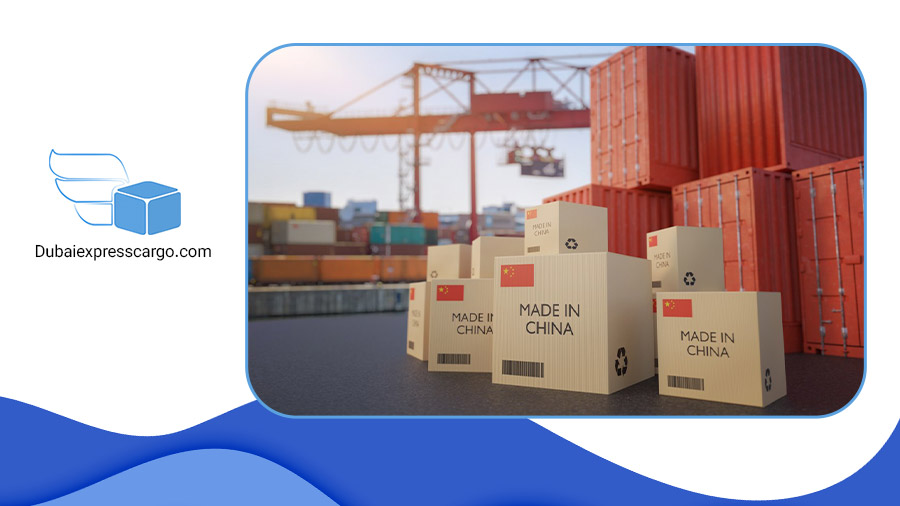
Once you’ve identified a reliable supplier, it’s time to negotiate and finalize your order. This crucial step requires clear communication, strategic tactics, and a focus on your desired outcome.
Establishing Clear Specifications:
Leave no room for ambiguity! Clearly define your laptop specifications, including:
- Hardware components: Processors, RAM, storage, graphics cards, etc.
- Operating system and software: Pre-installed software or simply the OS?
- Additional features: Touchscreen, backlit keyboard, specific ports, etc.
- Quality standards: Acceptable margin for defects, materials used, and any required certifications.
- Quantity requirements: Initial order size and potential future orders.
Negotiating Competitive Prices:
Don’t shy away from bargaining! Here are some tips:
- Research market prices: Know the average cost of similar laptops to set a realistic pricing target.
- Leverage supplier competition: Get quotes from multiple suppliers and use them to negotiate better prices.
- Order larger quantities: Negotiate bulk discounts for increased profitability for both parties.
- Focus on overall value: Consider the initial price, payment terms, warranty periods, and after-sales service.
Fair negotiation leads to a win-win situation, so approach it with a firm yet collaborative mindset.
Ensuring Prompt Order Confirmation:
Once you agree, solidify the details with a clear order confirmation document. This should include:
- Product specifications and quantity: A precise recap of your agreed-upon laptop features and number of units.
- Pricing and payment terms: Final price, payment method, and any installment plans, if applicable.
- Delivery timelines: Estimated production and shipping times, ensuring you receive your laptops on time.
- Warranty and after-sales service: Clearly outlined warranty coverage and support the supplier offers.
A written confirmation protects both parties and is a reference point.
You can ensure a smooth and successful transaction with your Chinese laptop supplier by carefully laying out your specifications, negotiating strategically, and securing a concrete order confirmation.
Communication is key, so maintain open dialogue and build trust for a long-term business relationship.
Step 4: Warehousing and Transportation

Once you’ve secured your laptops from China, the journey isn’t quite over. Ensuring their safe arrival at your doorstep requires careful planning and strategic choices regarding warehousing and transportation.
Selecting an Efficient Warehousing Facility:
Your laptops deserve a secure and reliable home base. When choosing a warehousing facility, prioritize:
- Security: Opt for facilities with CCTV, access control, and alarm systems to safeguard your valuable cargo.
- Quality Control: Ensure they have processes to inspect your laptops upon arrival and before dispatch, minimizing the chances of damaged or faulty units.
- Traceability: Choose a facility with a robust inventory management system, allowing you to track your laptops throughout their stay.
Ensuring Safe Transportation:
The open road (or sea) can be treacherous for delicate electronics. Choose wisely when it comes to shipping:
- Reliable Shipping Methods: Air freight offers speed and security, while sea freight is more cost-effective for larger shipments. Choose the option that best suits your needs and budget.
- Insurance Coverage: Protect your investment with appropriate insurance against potential damage or loss during transit. Consider covering all risks from warehouse to doorstep.
- Secure Packaging: Invest in sturdy, shock-absorbent packaging materials to cushion your laptops from bumps and jolts during the journey.
Remember, a little extra investment in secure transportation can prevent significant headaches and financial losses down the line.
Monitoring Shipment Progress:
Staying informed is key. Look for a shipping provider with:
- Real-time Tracking: Track your laptops’ location and progress 24/7 for peace of mind.
- Customs Clearance Updates: Receive timely notifications about your shipment’s customs clearance status to anticipate any potential delays.
- Delivery Notifications: Get alerted when your laptops are out for delivery and plan for their arrival accordingly.
Step 5: Post-Shipment Procedures

You’ve navigated the intricate world of importing laptops from China, and your precious cargo has finally arrived. But the story doesn’t end there!
Post-shipment procedures ensure quality, build customer trust, and pave the way for future collaborations.
Conducting On-Arrival Inspections:
Don’t just assume everything is perfect. Inspect your laptops upon arrival to verify the following:
- Product Conformance: Ensure the laptops match your agreed-upon specifications in terms of hardware, software, features, and quality standards.
- Physical Condition: Check for any cosmetic damage, scratches, or malfunctioning components.
- Quantity Accuracy: Verify that the number of laptops received matches your order confirmation.
Thorough inspections minimize the risk of receiving faulty or non-compliant units and allow you to address any issues with the supplier promptly.
Providing Customer Support:
Happy customers are loyal customers. Be ready to provide excellent customer support:
- Handling Warranty Claims: Efficiently process warranty claims and ensure timely repairs or replacements.
- Addressing Customer Issues: Respond promptly to customer inquiries and complaints, offering solutions and demonstrating empathy.
- Building Loyalty: Go beyond the basics! Offer additional support, answer product-related questions, and build lasting customer relationships.
Fostering Long-Term Partnerships:
Think beyond just this one shipment. Building strong relationships with your Chinese supplier can benefit you in the long run:
- Maintaining Open Communication: Keep the dialogue flowing! Share feedback on your experience, discuss future orders, and express your appreciation.
- Transparency and Honesty: Be upfront about any concerns or issues you encounter, fostering a trusting and collaborative partnership.
- Mutual Benefits: Seek opportunities for win-win situations. Negotiate favorable terms for future orders, explore new product collaborations, and build a mutually beneficial relationship.
Investing in long-term partnerships with reliable suppliers can secure a stable and advantageous source for future laptop import needs.
Remember, post-shipment procedures are not just a formality but an opportunity to ensure quality, build trust, and pave the way for a successful and sustainable import journey from China.
Focusing on inspections, customer support, and long-term collaboration can transform your import experience into a thriving business venture.
Related Article: QATAR’S CUSTOMS CLEARANCE REGULATIONS
Conclusion
This comprehensive guide from Dubai Express Cargo has equipped you with the knowledge and roadmap to navigate every step of Importing laptops from China, from identifying reliable suppliers to ensuring safe delivery and fostering long-term partnerships.
Remember, success lies in:
- Prioritizing quality: From supplier selection to on-arrival inspections, never compromise on your quality standards.
- Embracing transparency: Maintain open communication with your supplier, customers, and authorities to build trust and avoid unnecessary hurdles.
- Negotiating strategically: Leverage market knowledge and supplier competition to secure the best deals while ensuring mutual benefit.
- Staying informed: Monitor your shipments, track progress, and stay informed about regulations and market trends to make proactive decisions.
- Building relationships: Investing in long-term partnerships with reliable suppliers can solidify your import success and open doors to future opportunities.
As long as you follow these guidelines and adapt them to your unique needs, you’ll be well on your way to conquering the vast and exciting world of international trade.
Suppose you have any questions about this process or need help from an authorized cargo company; In that case, Dubai Express Cargo is here to help you on this journey.








